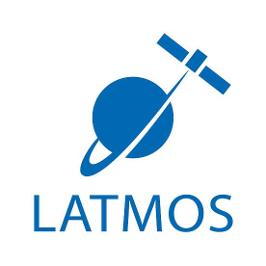PHEBUS observation of Helium in Mercury’s Exosphere during the first fly-by of Mercury by the Bepi-Colombo mission
Description
On October 1st 2021, Bepi-Colombo performed its first fly-by of Mercury. During the maneuver, the short wavelength channel of PHEBUS (55nm-155nm) was activated for a total duration of 1 hour. The boresight of PHEBUS was in a fixed direction with respect to the stars during the whole sequence, pointing close to the north ecliptic pole and almost tangential to the limb at the equator.
The helium resonance line at 58.4 nm was clearly observed during the whole sequence. At large distance from the planet, the emission was due to helium atoms in the interplanetary medium (interplanetary UV glow). Just after crossing the terminator of the planet and entering the dawn side of the exosphere, PHEBUS observed a clear additional emission due to scattering of solar photons by helium atoms in the exosphere of Mercury. This signal was visible for about 10 minutes, decreasing as Bepi-Colombo moved away from the planet.
Temporal extent date range: 2021-10-01-23:04:53 to 2021-10-02-00:04:42
Data access Platforms The Probing the Hermean Exosphere by UV Spectroscopy (PHEBUS) instrument is a multiple channel instrument composed of two spectrographs operating in overlapping spectral ranges in the ultraviolet (EUV and FUV) and two additional visible lines (potassium and calcium centered near 404 and 422 nm).
The instrument and its scientific goals are described in details in [1] and [2].
This dataset contains the total count rate recorded by PHEBUS during the whole observation sequence, as well as the associated dark count rate and the uncertainty for the total count rate, both at 58.4 nm. It also contains some auxiliary data (Mercury and Bepi-Colombo positions, Phebus boresight and Sun direction) useful for the reconstruction of the geometry of the observation.
PHEBUS instrument
The PHEBUS project is funded by National Space Agencies of France (CNES), Japan and Russia (Roscosmos). Instrument ground calibrations were also supported by Italian Space Agency.
BepiColombo is Europe's first mission to Mercury. Launched on 20 October 2018, it is on a seven year journey to the smallest and least explored terrestrial planet in our Solar System.
When it arrives at Mercury in late 2025, it will gather data during its one-year nominal mission, with a possible one-year extension.
The mission comprises two spacecraft: the Mercury Planetary Orbiter (MPO) and the Mercury Magnetospheric Orbiter (Mio).
BepiColombo is a joint mission between ESA and the Japan Aerospace Exploration Agency (JAXA), executed under ESA leadership.
Publications
[1] Chassefière, E., J-L. Maria, J-P. Goutail, E. Quémerais, F. Leblanc, S. Okano, I. Yoshikawa, O. Korablev, V. Gnedykh, G. Naletto, P. Nicolisi, M-G. Pelizzo, J-J. Correia, S. Gallet, C. Hourtoule, et al. PHEBUS : a double ultraviolet spectrometer to observe Mercury’s exosphere, Planet. Space Sci., 58, 201-223, (2010)
https://doi.org/10.1016/j.pss.2008.05.018
[2] Quémerais, E., J-Y. Chaufray, D. Koutroumpa, F. Leblanc, A. Reberac, B. Lustrement, C. Montaron, J-F. Mariscal, N. Rouanet, I. Yoshikawa, G. Murakami, K. Yoshioka, O. Korablev, D. Belyaev, M.G. Pelizzo, A. Corso, and P. Zuppella, PHEBUS on
BepiColombo : Post-launch update and instrument performance, Space Sci. Rev., 216 :67, (2020)
https://doi.org/10.1007/s11214-020-00695-6
Contacts
Principal Investigator/Owner:
Eric Quémerais (LATMOS/IPSL, UVSQ Université Paris-Saclay, Sorbonne Université, CNRS, Guyancourt, France) Eric.Quemerais@latmos.ipsl.fr
Co-Investigator:
Jean-Yves Chaufray (LATMOS/IPSL, UVSQ Université Paris-Saclay, Sorbonne Université, CNRS, Guyancourt, France) Jean-Yves.Chaufray@latmos.ipsl.fr
Other (Data & DOI manager):
Reberac Aurélie (LATMOS/IPSL, UVSQ Université Paris-Saclay, Sorbonne Université, CNRS, Guyancourt, France) Aurelie.Reberac@latmos.ipsl.fr
Dataset information
Howto cite




